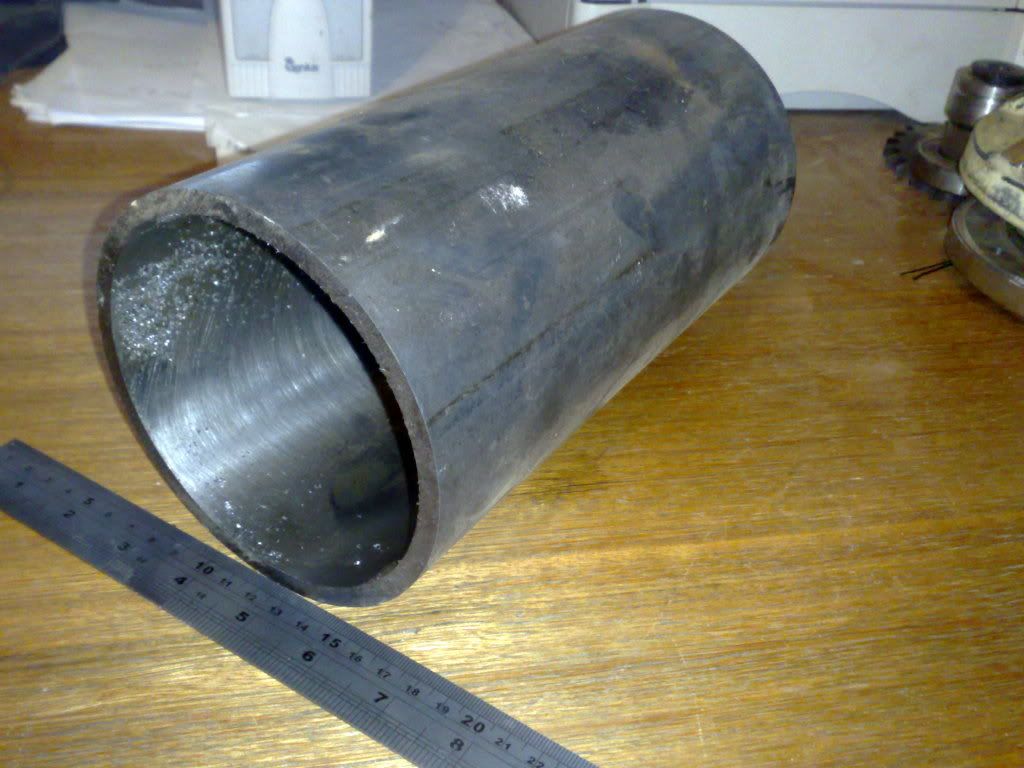Im on my knees begging for help.......... ;D
Im in the process of thinking about my boiler. My build will use the boiler to mount the engine pairing and therefore has to be (at least mocked up) in place to mount the cylinders and slide carriage pretty soon.
Ive read lots about miniature boilers but must admit to becoming a little confused with the info flow Ive tried to inhale. So... a couple of questions for the boiler-aholics on here...
My boiler is 120mm (approx 5 and 3/4") high and 250mm (approx 9 and 3/4") long. Ive read that it is advisable to move to welded steel at around this size.
No problem, but is there a specific type of tubing recommended?
Im guessing that heavy wall truck exhaust tubing is not advisable? (Too heavy a wall and getting it to temp would take ages considering steel wont absorb heat as readily as brass or copper and these have a defined 'seam')
I am concerned about the inherent dangers of working with and around live steam and I feel I understand the needs of the safety valve but I want redundancy in this area (2 valves, a secondary valve set slightly higher then the primary valve and each capable of venting faster than steam is generated. This unit is intended for a radio controlled paddle wheeler and may well be a distance away should anything go wrong).
Is there a precedent here?
Is there anything I should know? (I have NO experience in this area and am feeling my way forward very slowly, reading is no substitute for experience, hence my questions).
I hope to be working at around 40 to 50 PSI (the engine will dictate this obviously) and will hydraulically test to 100 before commisioning the unit.
Have I missed anything here?
Thanks in advance.
Artie
Just added a PS. Its propane fired with a throttlable flame control and self igniter using little camping disposable propane bottles (recycling a camping cooker... ;D)
Im in the process of thinking about my boiler. My build will use the boiler to mount the engine pairing and therefore has to be (at least mocked up) in place to mount the cylinders and slide carriage pretty soon.
Ive read lots about miniature boilers but must admit to becoming a little confused with the info flow Ive tried to inhale. So... a couple of questions for the boiler-aholics on here...
My boiler is 120mm (approx 5 and 3/4") high and 250mm (approx 9 and 3/4") long. Ive read that it is advisable to move to welded steel at around this size.
No problem, but is there a specific type of tubing recommended?
Im guessing that heavy wall truck exhaust tubing is not advisable? (Too heavy a wall and getting it to temp would take ages considering steel wont absorb heat as readily as brass or copper and these have a defined 'seam')
I am concerned about the inherent dangers of working with and around live steam and I feel I understand the needs of the safety valve but I want redundancy in this area (2 valves, a secondary valve set slightly higher then the primary valve and each capable of venting faster than steam is generated. This unit is intended for a radio controlled paddle wheeler and may well be a distance away should anything go wrong).
Is there a precedent here?
Is there anything I should know? (I have NO experience in this area and am feeling my way forward very slowly, reading is no substitute for experience, hence my questions).
I hope to be working at around 40 to 50 PSI (the engine will dictate this obviously) and will hydraulically test to 100 before commisioning the unit.
Have I missed anything here?
Thanks in advance.
Artie
Just added a PS. Its propane fired with a throttlable flame control and self igniter using little camping disposable propane bottles (recycling a camping cooker... ;D)





